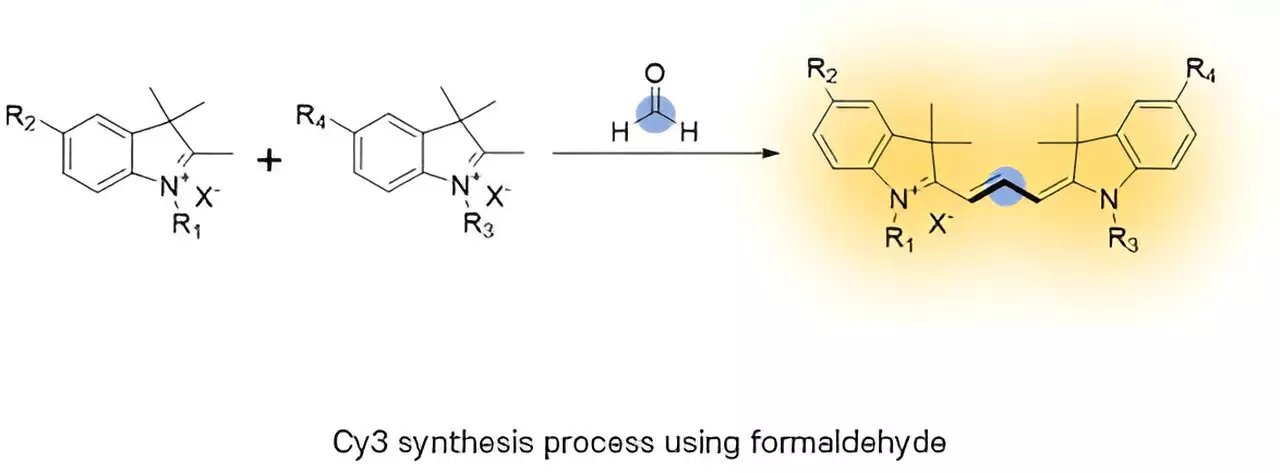In a recent advancement that has the potential to reshape the field of organic synthesis, a research team has successfully synthesized organic fluorophores in a manner that is both cost-effective and highly efficient. Published in the prestigious journal *Angewandte Chemie International Edition*, this breakthrough utilizes formaldehyde as a key reagent in the synthesis of trimethine cyanine (Cy3), an essential tool in medical diagnostics and bioimaging. The traditional methods for creating Cy3 have often been prohibitively complex, involving cumbersome compounds that not only increase production costs but also yield multiple byproducts.
Formaldehyde (HCHO), despite its notorious reputation as a toxic substance that can adversely affect proteins and DNA, has emerged as a valuable agent in organic synthesis. By leveraging its simple molecular structure—one carbon atom, two hydrogen atoms, and one oxygen atom—the research team has ingeniously integrated this straightforward compound into their synthetic strategies. This approach allowed them to streamline the synthesis process significantly, transforming a resource-intensive multi-step method into a more practical one-pot reaction.
This transition to a single-step synthesis has major implications for researchers and industries that rely on fluorophores. Conventional procedures often involved intricate reactions that not only wasted valuable resources but also demanded time-consuming purifications and isolations. The use of formaldehyde in place of complex precursors offers a cleaner, more efficient pathway to producing high-quality Cy3 molecules.
The ability to generate Cy3 more effectively opens up new opportunities in fields such as medical diagnostics, cancer cell tracking, and genetic analysis. Fluorophores like Cy3 are instrumental in facilitating the visualization of biological processes within tissues. As these organic compounds detect specific light wavelengths, their effective application can lead to enhanced imaging techniques that improve disease detection and monitoring.
The researchers did not stop at in vitro synthesis; they explored the applicability of their method in biological settings. During their investigations on rat small intestine tissue, they found that inflammation induced a marked decrease in fluorescence, correlating with lower levels of natural formaldehyde during inflammatory responses. This finding underscores the importance of considering metabolic pathways when applying synthetic approaches in living organisms.
Led by Professor Young-Tae Chang and Dr. Sun Hyeok Lee at POSTECH, this research highlights a significant leap forward in the production of organic fluorophores. As the scientific community continues to seek greener and more efficient synthesis methods, the incorporation of simple and widely available molecules like formaldehyde could herald a new era in organic chemistry.
The potential for this technique to be adopted within various biomedical applications suggests that it is not only cost-effective but essential to advancing our understanding of biological mechanisms. As researchers build upon these findings, the collaborative efforts to refine and implement such innovative methods will likely lead to unprecedented developments in both chemical synthesis and medical technologies.

